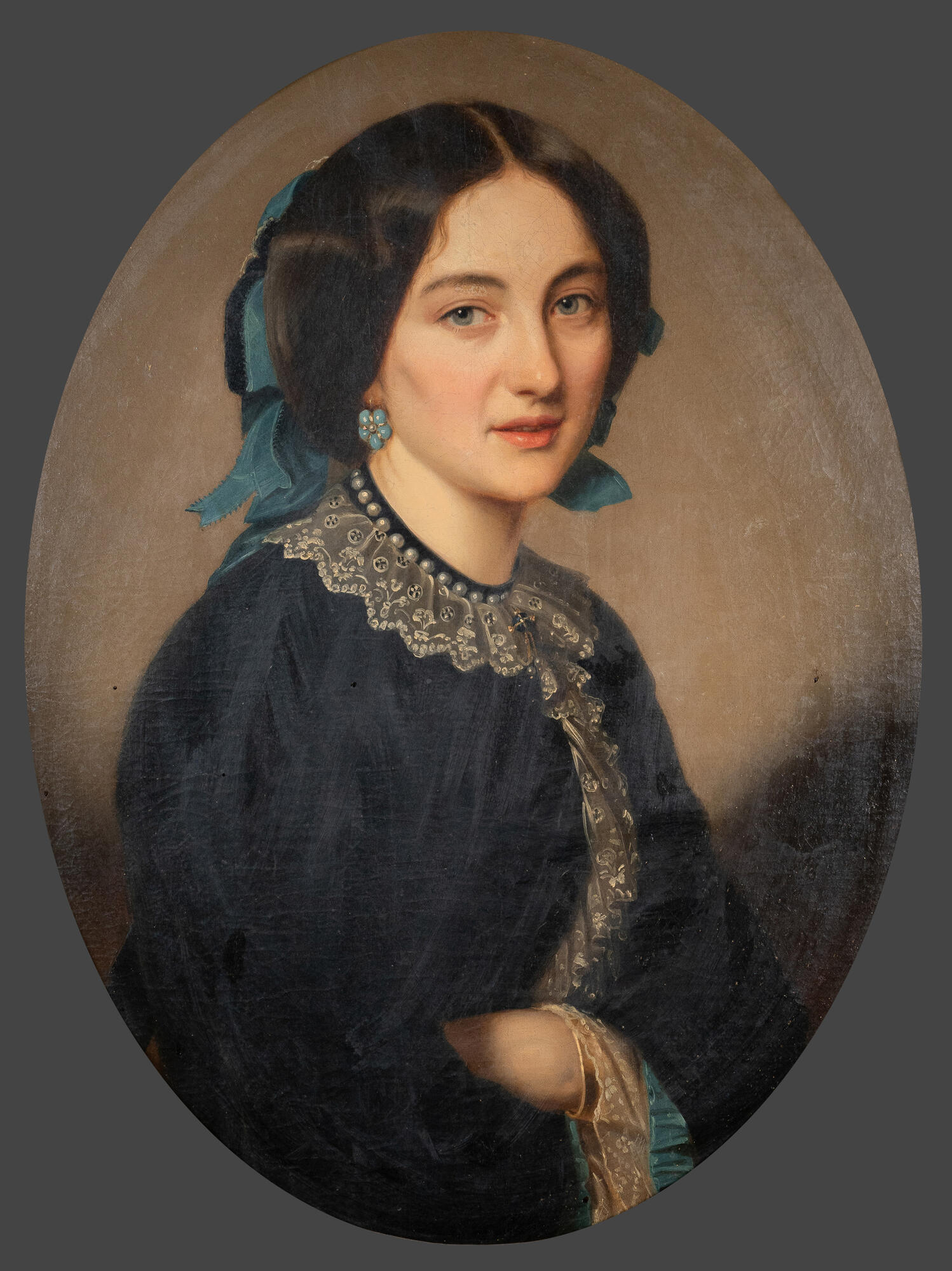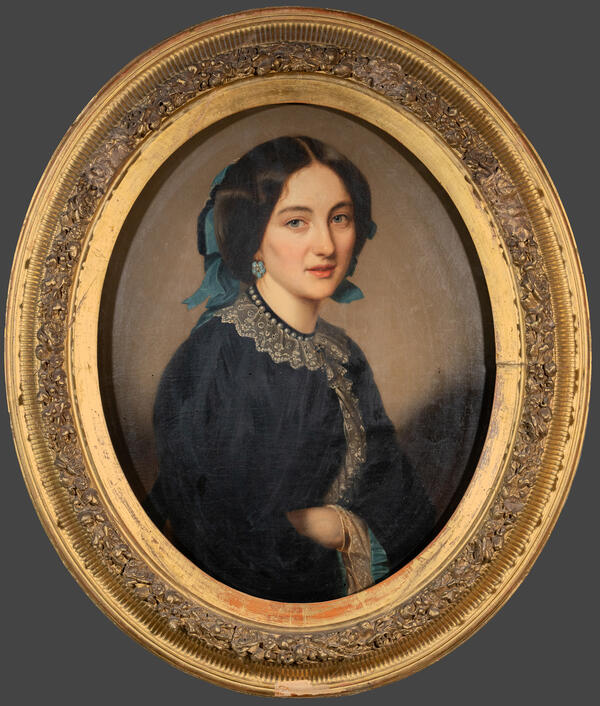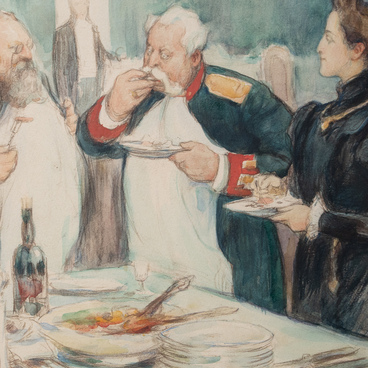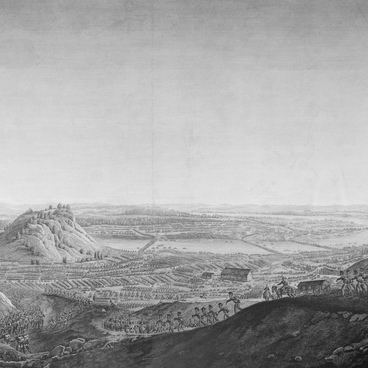Maria Alekseyevna Dyakova was the sister of Leo Tolstoy’s friend, Dmitry Dyakov. Tolstoy met the Dyakov family in Kazan in the 1840s and was friends with them for many years. Dmitry Dyakov was a friend to all the Tolstoy brothers.
The estates of the Tolstoys and the Dyakovs in the Tula Governorate were not far from each other. Dmitry was the godfather of the writer’s older children, Tatiana and Ilya. Tolstoy remembered him as an energetic, cheerful and open person. In the trilogy “Childhood”, “Adolescence”, “Youth”, Leo Tolstoy incorporated some of the features of Dmitry Dyakov in Prince Dmitry Nekhludoff, a friend of Nikolai Irtenyev:The Portrait of Maria Sukhotina-Diakov
With my beloved friend Dmitry, my wonderful Mitya…
On November 29, 1857, Leo Tolstoy wrote the following about Dmitry’s sister, Maria Dyakova, in his diary:
Sukhotina is honest, sincere, sweet.
At the age of 38, Sukhotina, a mother of five children, divorced her first husband, which partly served as Tolstoy’s material when writing Anna Karenina. In the middle of the 19th century, divorces were exceptionally rare, especially those initiated by a woman with children.
As some contemporaries believed, Sergei Mikhailovich Sukhotin, Maria Alekseyevna’s first husband, may have served as the prototype of Alexei Karenin — a chamberlain, adviser to the Moscow palace office and a man of reason. Their son Mikhail Sergeyevich Sukhotin was well acquainted with Leo Tolstoy and his family. He often visited Tolstoy in Khamovniki.
One day Tolstoy presented Mikhail Sukhotin with boots he made himself — at that time the writer was into shoemaking. Widowed, Sukhotin decided to propose to Leo Tolstoy’s eldest daughter, Tatiana, despite them being 14 years apart. They gave birth to Tatiana Mikhailovna Sukhotina — the only granddaughter of Leo Tolstoy to be born from his daughters.
The creator of the portrait of Maria Sukhotina-Dyakova was the German painter Karl Johann Lasch. He studied at the Dresden Academy of Fine Arts and then at the Academy of Fine Arts in Munich. Karl Lasch lived in Moscow for almost ten years, where he painted many portraits of the Russian nobility.


